African Cropland Extent and Type Mapping
Accurate, high-resolution, and regularly updated cropland extent maps fill a critical information gap and help countries achieve increased food security.
Project Overview
Governing bodies in Africa are prioritising the security of food sources to support their growing populations. It has been estimated that the current production of crops will need to double by 2050 to meet the increasing demand of the continent.The Digital Earth Africa (DE Africa) team recognised that the availability of accurate, high-resolution, and regularly updated cropland extent and type maps would fill a critical information gap and help countries achieve increased food security.
Application & Platform
Digital Earth Africa (DE Africa) is a continental-scale Data Cube operating in the cloud. Digital Earth Africa makes Earth observation (EO) data free and accessible, delivering decision-ready products to the African continent. In addition to providing EO data and derived products, it is a processing and analysis environment that provides access to numerous services, tools, and capabilities to allow users to develop applications for research and societal benefit.The DE Africa team has developed a Jupyter Notebook to demonstrate the use of Earth observation data to determine the estimated location of croplands across many African countries. These provisional cropland extent maps were built using Copernicus Sentinel-2 satellite images from 2019 and they are accessible through the DE Africa Open Data Cube (ODC) API, available through the DE Africa Sandbox.
CEOS-ARD Usage
ESA’s Sentinel-2 Level-2A Surface Reflectance (SR) product has been assessed as CEOS-ARD and is available directly from the Copernicus Hub and via mirrors on various cloud platforms. The DE Africa team used Sentinel-2 data to build the provisional cropland extent maps and used extensive training data collected by DE Africa Implementing Partner agencies from across the African continent and coupled this with a Random Forest machine learning model.Impact
The Jupyter Notebook developed by the DE Africa team serves as a proof of concept for the use of CEOS-ARD for crop mapping. While the notebook only processes data from 2019, the process can now be scaled up to produce current maps. The use of CEOS-ARD allows for basic processing steps to be removed from the algorithm, and users can focus on their main goal of extracting useful information about croplands.Analysis of the validation dataset showed that many previous algorithms produced omission errors, that is, mis-labelling croplands as non-croplands. Use of CEOS-ARD as the starting point for these analyses will help mitigate these issues by providing a known and consistent baseline with robust initial corrections directly from the data providing agency.
Future Developments
A collaborative project to design an open-source framework for crop type mapping in Zambia has been initiated by DE Africa, in partnership with the Regional Centre for Mapping of Resources for Development (RCMRD) and FrontierSI. This project combines the services and tools of DE Africa with field data to develop a reproducible algorithm for crop type analysis. Leveraging the free, open data and continental coverage provided by DE Africa, the framework is fully scalable. This allows for future innovation towards greater food security for the continent by accurately predicting crop yields on a national scale, empowering smallholders to increase production via increased access to crop analytics and improved DE Africa services through user feedback.Technical Characteristics
CEOS-ARD Types: Surface Reflectance
Contributing Missions: Sentinel-2
Developing Agency: DE Africa
Users: DE Africa
Project website / more info: https://www.digitalearthafrica.org/
Points of contact for queries
Name
Digital Earth Africa
Email
